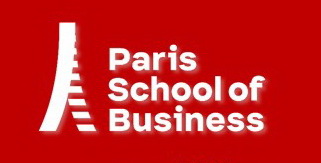
- About
- Partners
- Publications
-
Research projects
- newPIC initiatives
- Projects in execution
- 2018 - Innovation intermediaries in the healthcare sector
- 2018 - Innovation platforms - comparison Asia France
- 2018 - Collaborative economy and innovation platforms
- Closed projects
- 2017 - Innovation platforms in France
- 2017 - Multisensorial ambiancing and retail processes
- 2016 - Innovation platforms in Paris and Ile de France
- 2016 - Multisensorial ambiancing and branding perception
- 2014 - Design and Innovation - CPI
- 2014 - Open Innovation in global firms
- 2014 - Creative ideas with SEB
- 2014 - Dual-use innovation for Fr. MoD
-
Conferences
- Calls for papers - academic conferences
- newPIC initiatives
- 2019 - EURAM - Digital innovation
- 2018 - EURAM - Digital innovation
- 2018 - AbbeGregoire Innov days - Agility, Dyn. Capabilities and technological change
- 2018 - 4th Geography of Innovation conference
- 2017 - AbbeGregoire Innov days - Innovation and Dynamic Capabilities
- 2016 - RGCS workshop - Barcelona (CAT)
- 2016 - AIMS - Microfoundations of Dynamic Capabilities
- 2016 - RGS - Session on Open Creative Labs
- Seminars and keynotes hosted by newPIC at PSB
- Professional conferences (co-)organized by newPIC
- newPIC contributions to conferences
- Conferences in France
- Conferences abroad
- Invited conferences
- News
- News re. Conferences
-
Expert groups
- newPIC contributions
- newPIC initiatives
- 2015 Open labs in France with ANRT
-
Educ.Programs
- Initial education
- PhD and DBA program
- Executive education
- Master programs
- PSB Master in Business Consulting
- PSB Master in Marketing
- PSB Master in Humane Resources Management
- STRATE MBA in Management by Design
- PSB Elective in Art and Culture Management
- PSB Executive DBA program
- PSB Executive DBA - track "Corporate Strategy,
Manag. of Innovation and Strategic Management" - Executive Education Projects
- 2015-2016 - ORANGE learning expedition
- 2014-2015 - CDC program
- Team

































